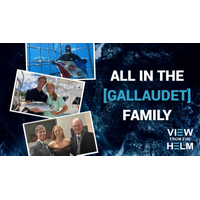
PODCAST: “All in the [Gallaudet] Family”
become an oceanography officer in the US Navy. What was great about that career path in the Navy is you get exposed to ocean technologies from the very beginning. Even at the Naval Academy, we were using side-scan sonar to do surveys and collect data in the Chesapeake Bay.My first tour was going to graduate school at Scripps where I worked with multibeam sonar and satellite imagery. I went on a few cruises on a couple of Scripps ships, and then I immediately deployed to the Arabian Gulf and worked on a hydrographic survey ship, towing side-scan sonar and operating multibeam sonar, and using other types
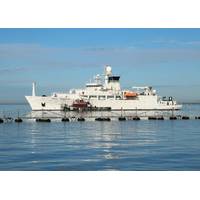
US Navy to Name Oceanographic Survey Ship USNS Robert Ballard
marine surveyors. Widely known as a discoverer of the final resting place of the R.M.S. Titanic, Dr. Robert Ballard is a retired U.S. Navy Commander, former director of the Center for Ocean Exploration, and a tenured professor of oceanography at the University of Rhode Island’s Graduate School of Oceanography.“Dr. Ballard’s career, explorations, research and focus on teaching the next generation of oceanographers is remarkable, and I am pleased to name T-AGS 67 in his honor,” Del Toro said. “One of my enduring priorities is building a culture of warfighting
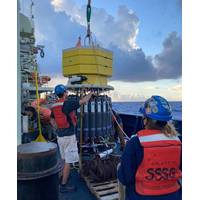
Deep-sea Research an 'Eye-Opener' for URI student
ticked my boxes and URI maintains a solid reputation for oceanic research."The exhibition to the Puerto Rico Trench provided Parisi with the hands-on experience he wanted. "I gained insights into the development and operation of autonomous systems, which is my area of focus in graduate school," said Parisi. "Field testing never goes as expected and we often have to adapt to unexpected new challenges as they present themselves."A giant amphipod was retrieved from the Puerto Rico Trench and brought back to the lab. Photo by Phil Parisi
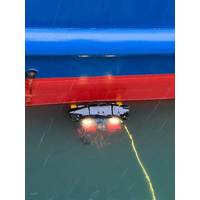
Armach Robotics Set to Take the Pole Position on Ship Hull Maintenance, Intelligence
. He knows everybody in the industry; he knows the trends in the industry. He knows the industry from the robotics side, so, I brought him in as Vice President of Growth and Strategy.James Truman is our VP of Engineering. James and I have worked together since the early to mid-2000s, he and I were in graduate school at Johns Hopkins together. He was a chief engineer at Teledyne Webb, and James and I have built a lot of robots almost two decades. And when we started doing the hull robotics segment at Greensea and developing this technology, I brought James into Greensea to lead that technical development
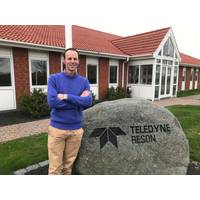
Teledyne Marine Strengthens its Product Management Team
the past two years working as a Project Surveyor for Fugro in Aberdeen, Pim also has valuable overseas experience working for Van Oord, Rijkswaterstaat, C&C Technologies (now Oceaneering) and for Geological Survey of Canada (GSC). With a BSc in Geomatics from NHL Stenden University, Pim attended graduate school at the University of New Brunswick, where he studied under the renowned multibeam system expert, Dr. John Hughes Clarke, earning an MSc.Eng. in Geodesy and Geomatics Engineering in 2008.“As the Hydrographic Market continues to evolve, Teledyne Marine are focused on developing new solutions
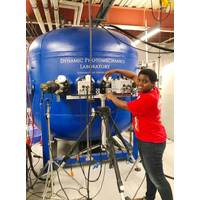
From Cameroon to Kingston: NUWC Helps Fund, Hires URI Doctoral Student Specialized in Corrosion
professor, Neba Mforsoh was the first female African American mechanical engineering doctoral student at URI.She finished her doctoral courses with a perfect 4.0 grade point average. Among her other accomplishments and awards were:Donald Cunnigen Award for Excellence in Graduate Studies (2021)URI Graduate School Diversity Award (2018-2019)American Society of Mechanical Engineers Experimental Mechanics best student paper award (2019)Haythornthwaite Foundation student travel grant (2019)As an engineer at the Naval Undersea Warfare Center, Neba Mforsoh is contributing to the Navy's research on coatings
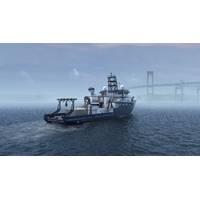
URI Unveils Name of New Research Vessel
The National Science Foundation’s new Regional Class Research Vessel that will soon call the University of Rhode Island’s Narragansett Bay Campus home has a name: Narragansett Dawn.Graduate School of Oceanography Dean Paula S. Bontempi announced the name of the new $125 million vessel after a nationwide competition and approval from the NSF.“Narragansett Dawn acknowledges the Indigenous peoples’ histories, ancestors, and perseverance in our communities today,” said URI President David M. Dooley. “It honors their stewardship of the land, sea and resources that they
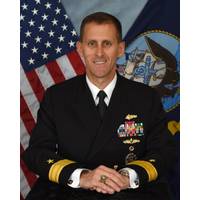
INTERVIEW: RDML John Okon, Commander, Naval Meteorology and Oceanography Command
advantage is people and partnerships.Meet RDML John OkonRear Admiral John Okon, Commander, Naval Meteorology and Oceanography CommandRDML John Okon is a native of Syracuse, NY, and holds degrees in Meteorology and Oceanography from State University of New York Maritime College and Naval Post Graduate School and National Security and Strategic Studies from the US Naval War College. He commanded Naval Oceanography Antisubmarine Warfare Center in Yokosuka, Japan and Fleet Numerical Meteorology and Oceanography Center in Monterey, California. Admiral Okon is currently the 11th Commander of Naval Meteorology
'Unusual' Underwater Rivers Found Along Australia's Coastline
System.“The data spanned more than a decade and is the equivalent to spending more than 2500 days at sea,” she said.“We were able to examine data from different areas of Australia and also look at the seasonal variability.”Professor Chari Pattiaratchi from UWA’s Oceans Graduate School and Oceans Institute said usually satellites were used to track surface features such as river plumes, but because the water flow was below the surface it was undetected until ocean gliders were deployed.“This is the most significant discovery for coastal oceanography in recent decades



 February 2024
February 2024





